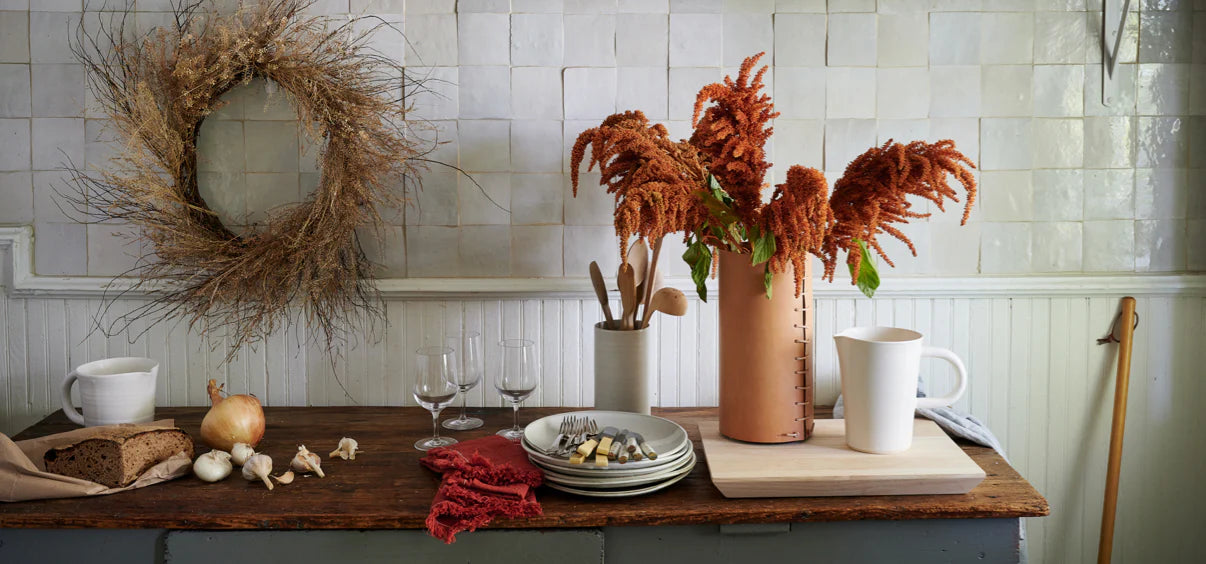Gifting has never been easier
Perfect if you're short on time or are unable to deliver your gift yourself. Enter your message and select when to send it.
Story by Diana Keeler / Photography by Troy House / Styled by Ayesha Patel

Kelsey and her team of fellow artists create simple, sustainable statements from locally grown and foraged plant material.

“In school, we learn to preserve the most beautiful waterfall — we think nature has to be extravagant,” says Kelsey Ter Meer, founder and lead designer of the Heart & Soil Flowers floral design studio. “But there’s beauty in the little things, too.”
The Southern California native moved to the East Coast when she was 17; she studied forestry and worked at farms across the Mid Atlantic. Along the way, she developed her aesthetic around floral arrangements, which privileged local flowers, grasses, and other materials over the de rigueur factory-flowers air-shipped from farms around the world. “When I was working on farms here, I saw this disconnect between rustic, farm-grown flowers and then South American roses,” she says. “I wanted to merge the two.” Now, when collaborating with clients for high-end events or hotels, she won’t necessarily lead with her environmental bona fides — instead, they’re baked into her design work. “I try not to impose our values directly on them,” she says, adding that the advantages of sourcing locally are often plain to see.
"There’s so much more of a sense of connection with the farmers, and so much more care put into growing and harvesting and packing them. The end quality is just better than what you’d find elsewhere."

For the holiday season, Ter Meer has collaborated with Bloomist on a series of wreaths, mostly made with materials found in the natural landscape surrounding her studio in Newburgh, New York, eighty miles north of New York City. “My personal favorite is the Forager Wreath — we foraged the base of the wreath, which is grapevine, and then used spryria branches from a local farm up here. We also foraged the pennycress and the other grasses — it was a labor of love,” she says. It’s an especially positive turn of events for the grapevine, which in Upstate New York is sometimes viewed as a pest. “It’s kind of invasive up here — it's not in this beautiful farmer’s field. It’s pretty marginalized. Some of the grasses [in the wreaths] are grown in the cornfield — they're the weeds that have grown around the corn — but the grapevine is on the fence.” Trust us: In her hands, it’s beautiful.
Your Shopping Cart is Empty
Browse our latest collection or check your saved favorites to add more items to your cart.






Manage your profile, track your orders, and enjoy a seamless shopping journey with us.